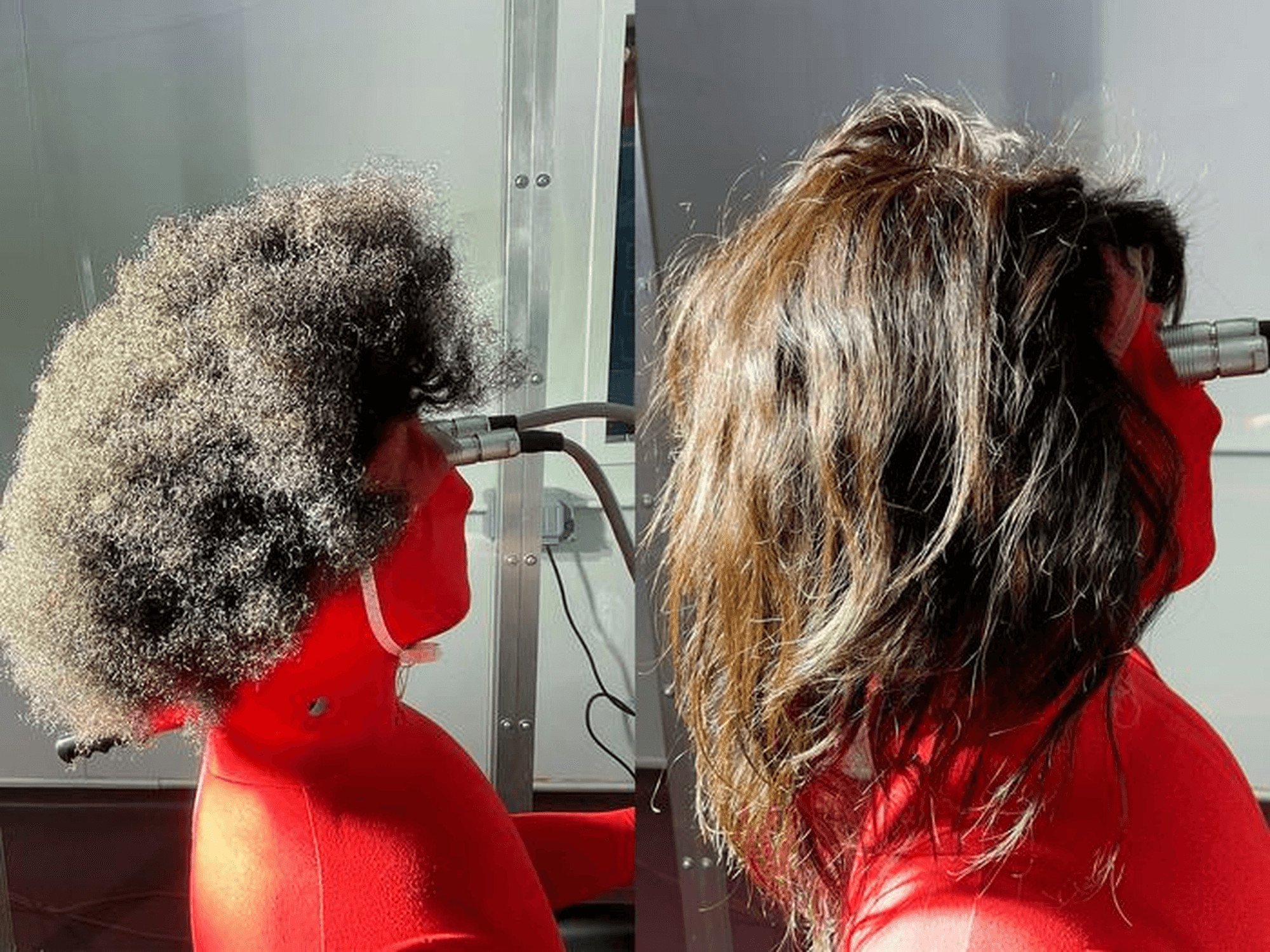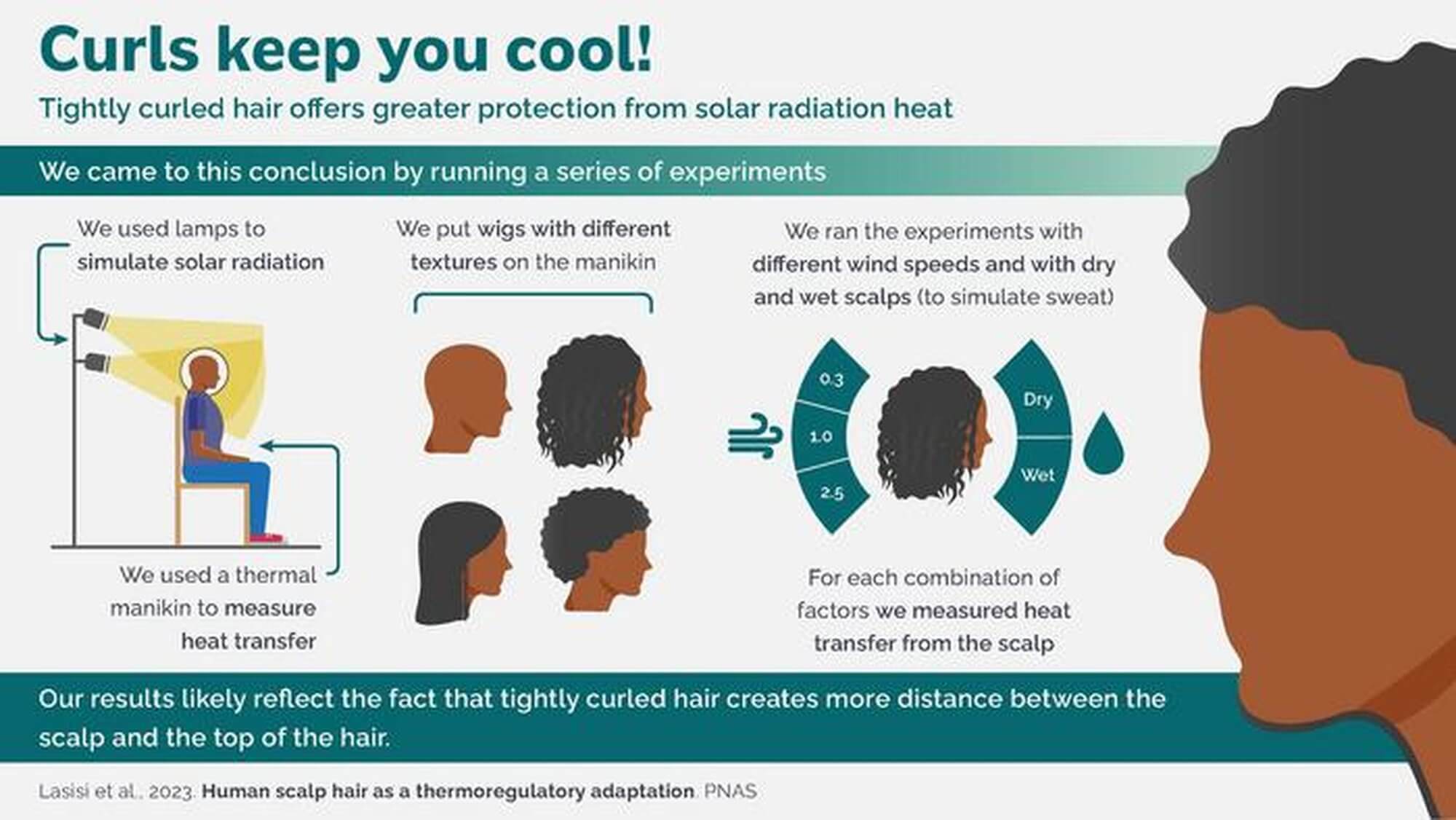UNIVERSITY PARK, Pa. — Curly hair can be a nuisance for those who struggle to tame it during the summer months. However, did you know the curls played a crucial role in early human survival? Researchers at Penn State say curly hair kept humans cool and this evolutionary adaptation allowed our brains to grow to their modern-day sizes.
“Humans evolved in equatorial Africa, where the sun is overhead for much of the day, year in and year out,” says Nina Jablonski, Evan Pugh University Professor of Anthropology at Penn State, in a university release. “Here the scalp and top of the head receive far more constant levels of intense solar radiation as heat. We wanted to understand how that affected the evolution of our hair. We found that tightly curled hair allowed humans to stay cool and actually conserve water.”
To understand how this affected our hair evolution, the researchers used a thermal manikin and human-hair wigs in a controlled environment. They found that tightly curled hair provided the best protection against solar radiation while minimizing the need to sweat excessively to stay cool. Since the brain is sensitive to heat and generates its own heat, too much radiation could lead to dangerous conditions.
As humans lost body hair, they developed efficient sweat glands to regulate body temperature. However, sweating comes at the cost of water and electrolyte loss. Curly hair likely evolved as a passive mechanism to reduce heat gain from solar radiation, enabling humans to stay cool without expending extra resources.

(CREDIT: George Havenith, Loughborough University)
The research also suggests that scalp hair releases a physical constraint, allowing our brains to grow to their modern sizes. Around two million years ago, Homo erectus had a similar physical build to us but a smaller brain size. However, by one million years ago, our brains reached their current sizes. The presence of scalp hair reduced the amount of heat gained from solar radiation, complementing the role of sweat glands in cooling the body.
These findings shed light on the importance of hair texture in regulating body temperature and offer insights into how humans adapted to their environment. The study also emphasizes the significance of using tools like thermal manikins to capture human data that would otherwise be challenging to find.

In addition to its evolutionary significance, this research prompts individuals to consider their hairstyles in different environments. Just as skin color affects decisions about sunscreen use, the study suggests that hair choices can also impact temperature regulation. Athletes and military personnel, for example, may need to consider the optimal hairstyle for different activities and climates.
The study is published in the journal PNAS.

